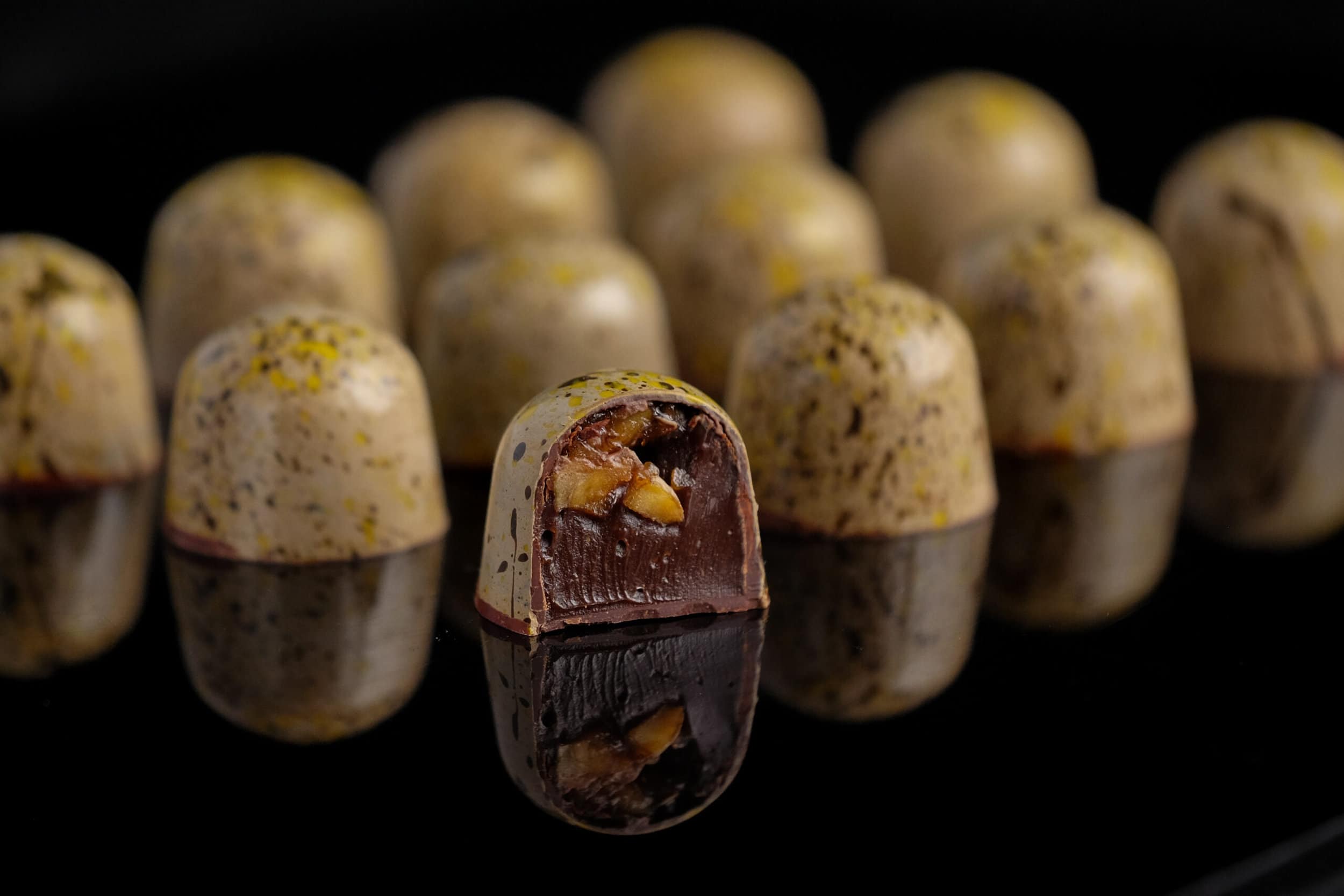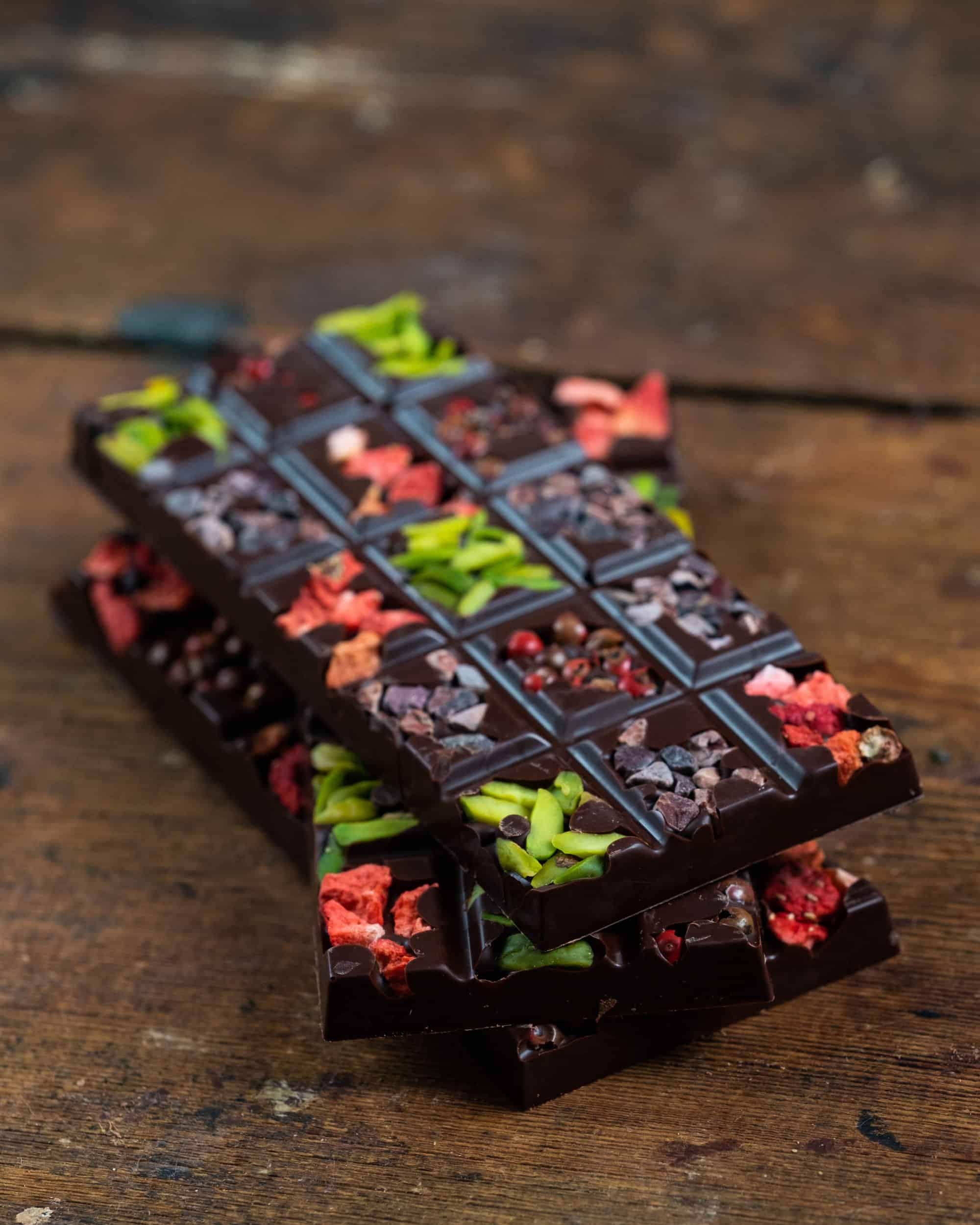Make Chocolates That Taste and Look Incredible
This class focusses on all aspects on making bonbons which includes colouring, shelling, filling
and layering and capping. Each class covers a new bonbon and therefore new designs, flavours and elements.
Technical skills that lead to creative expression
We’ll be using naturally coloured cocoa butters and stone ground chocolates in this class to create gorgeous chocolate shells.
Elements covered in this class …
Bonbon Design
Each bonbon class covers a new design using easy to find tools, like paint brushes and sponges, and naturally coloured cocoa butters. For this class I am using a Chocolate World 2116 mould, which is a larger capacity mould, 13g to be exact. This gives us more decorating space, but also more internal space for layering.
Caramelised Bananas
In this bonbon we are making caramelised bananas using a slow process which also reduces their natural liquid content in order to extent the overall longevity of this finished chocolate. We keep the bananas somewhat chunky in order to preserve their texture. The caramlised flavour goes beautifully with the coffee. sambuca and dark chocolate.
Coffee Sambuca Dark Chocolate Caramel Ganache
This caramel ganache came off of the coffee caramel that I use in my Tiramisu Bonbon. I wanted to use Sambuca because I adore the flavour of anise, which pairs perfectly with coffee. This combination has been a long standing tradition in Denmark where they use liquorice in a wide range of their chocolates. As we don’t cook the alcohol out, the warmth of the Sambuca comes through without it being too ‘raw’ and intense tasting.
When working with alcohols, the challenge is getting the right texture and set point, as alcohol affects the set point dramatically, but it also offers a natural preservative. This bonbon has a long shelf life of 4 months when cased in a well made shell (meaning, no holes in the cap or shell).
Shelling & Capping
No matter how much experience you have in this, you can always refine your technique and learn something new. My technique for both these applications has changed over the years, and now I cap by applying chocolate to the back of the mould, rather than using an acetate sheet. It’s quick and easy once you know some little tricks and get some experience under your belt.




